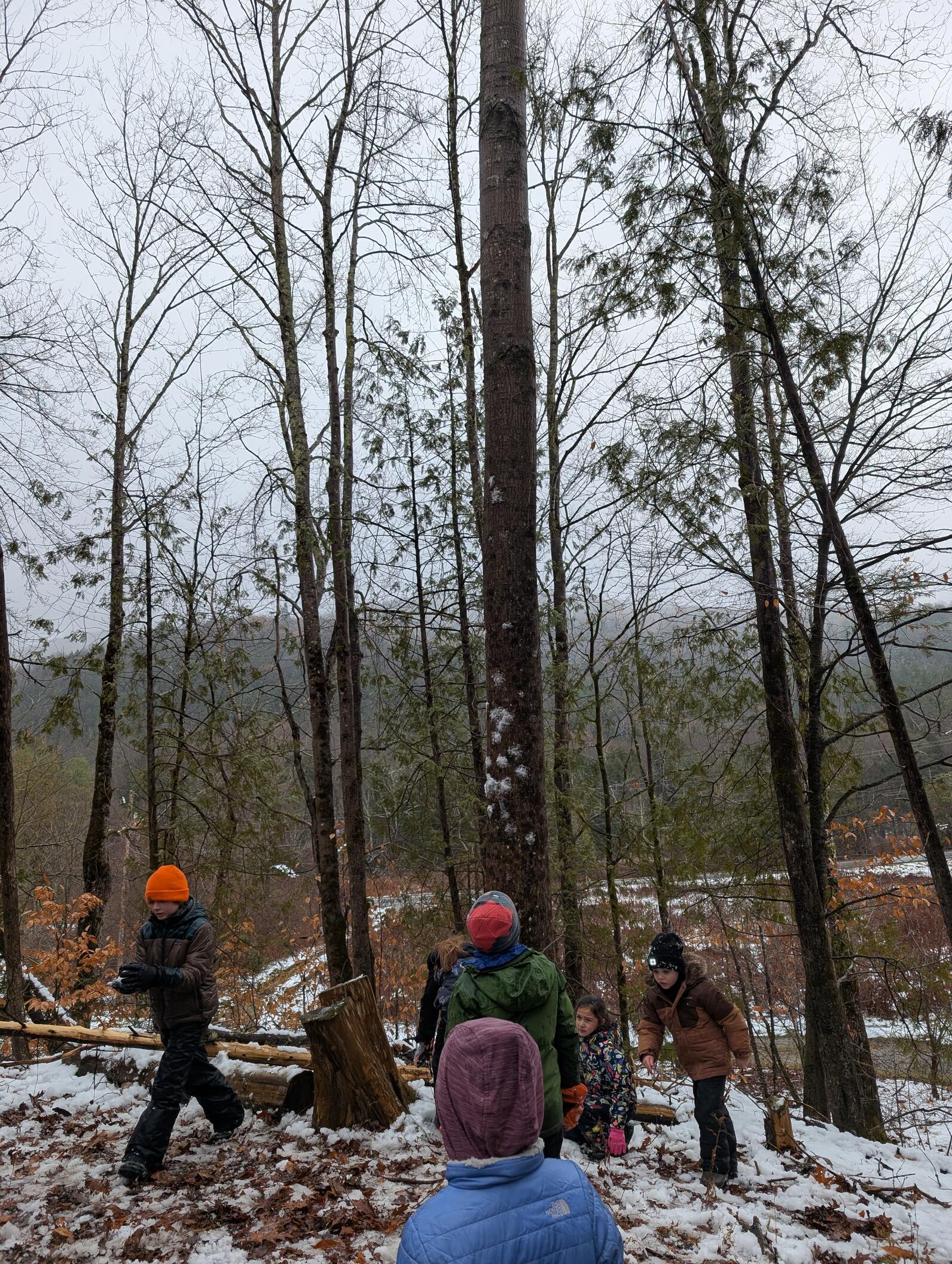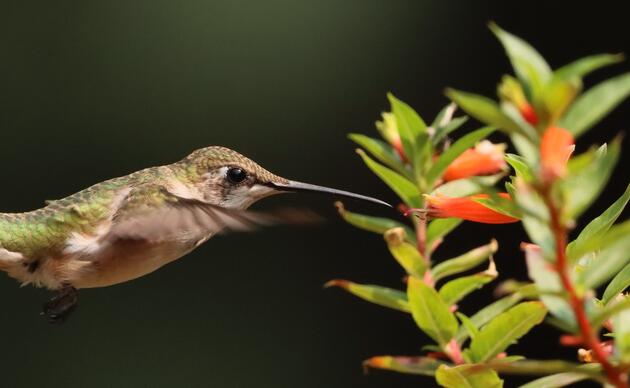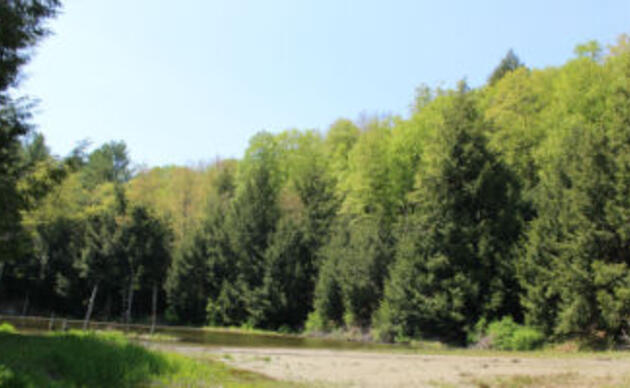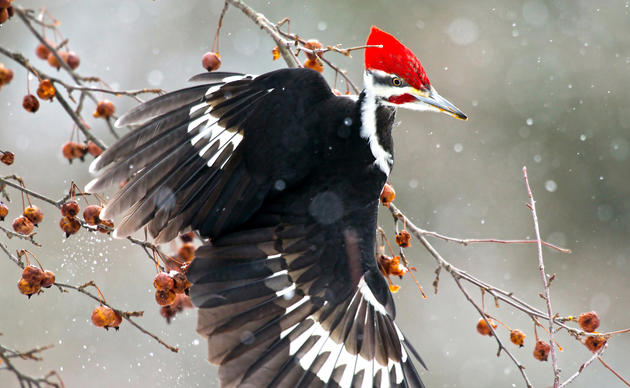This month at UnSchool we learned about how ecosystems are connected and how they are impacted by winter.
We started our day as squirrels, hiding acorns for the winter. Before snack and lunch, students were challenged to find an acorn to simulate squirrels finding food throughout the winter. At the end of the day we discussed students’ strategies for hiding and finding acorns. Half of them found the acorns that they had hidden and half of them just took whatever acorn they came across. Several kids said that they looked at the base of oak trees or near where they saw acorn caps. Half of the group said that they hid both of their acorns in one spot while the other half hid the acorns in different spots. All of this is representative of how squirrels hide and find food. We have two species of squirrel here in Vermont, each with a different food stash strategy. Gray squirrels hide their food in lots of different places while red squirrels hide their food in large caches. To learn more about red and gray squirrels you can read this brief article by Mary Holland and search for squirrel caches in a forest near you.
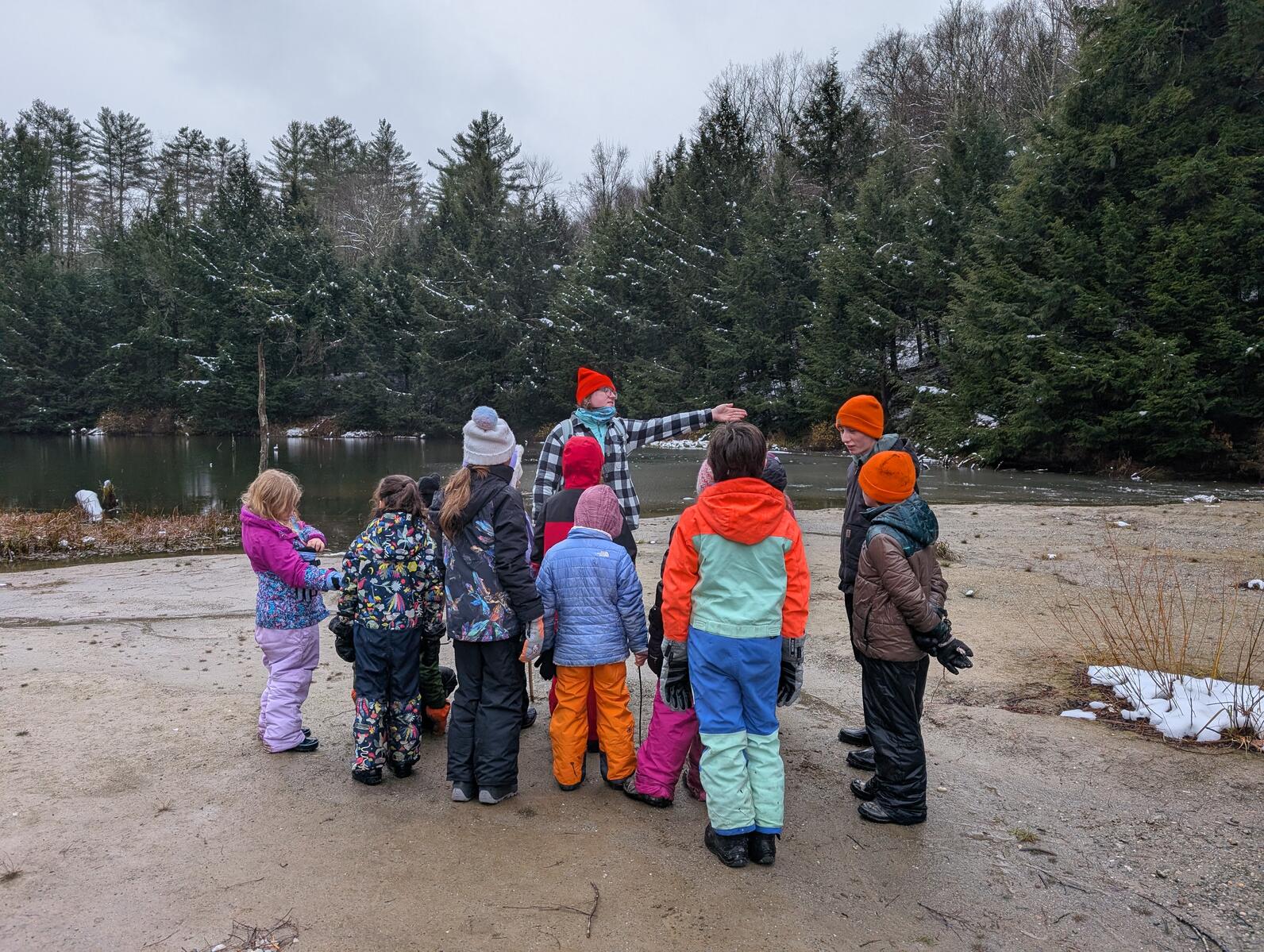
We also spent time in the morning exploring connections among living and non-living things within the ecosystem at Audubon. Students used yarn to connect photos in a web based on who eats, needs, or uses what. This activity can be adapted to your own backyard! Make a list or draw pictures of plants and animals that you find then make as many lines as you can to connect the ecosystem. Expand the learning by talking about what happens to the ecosystem when something is taken away or added.
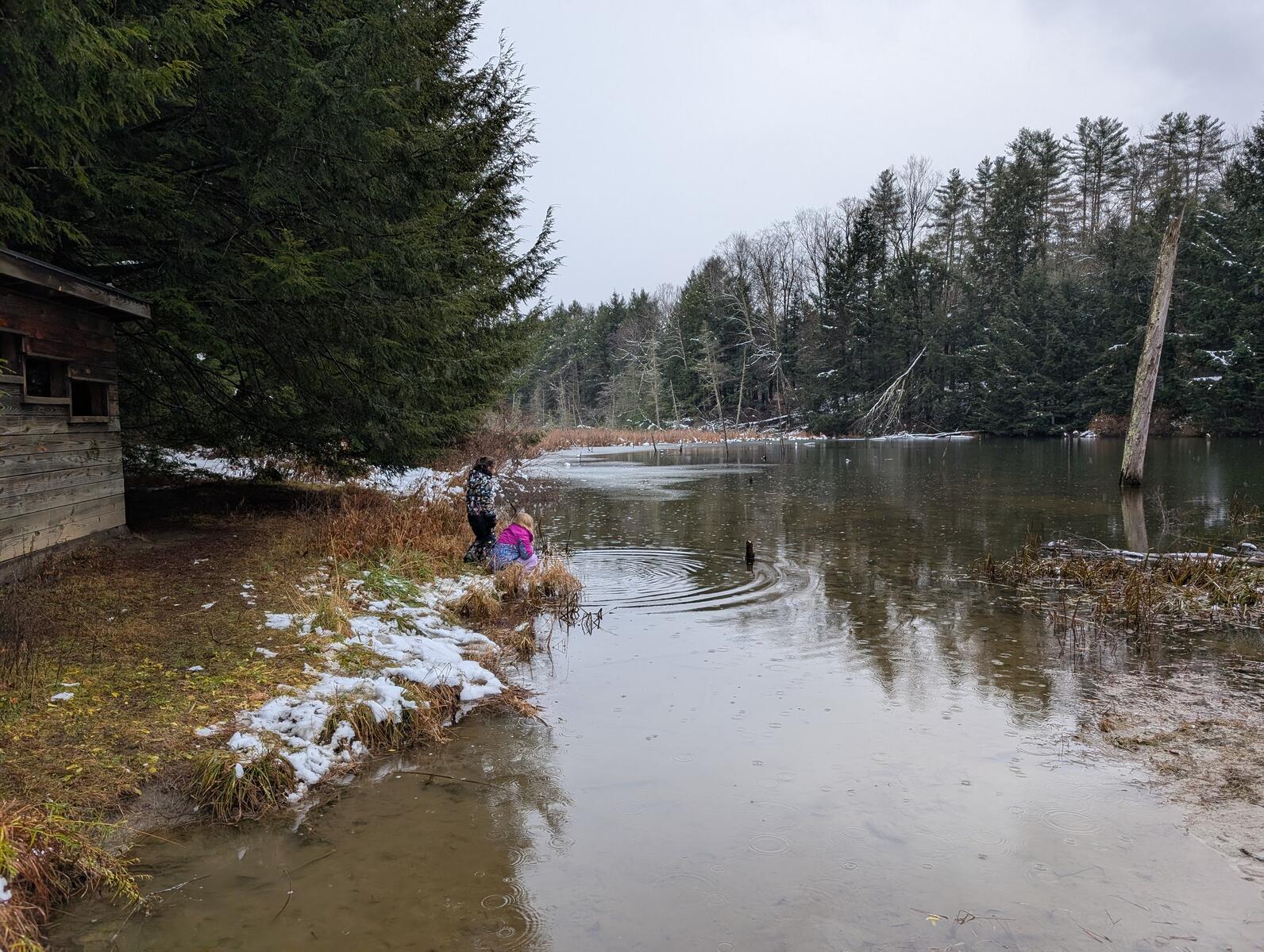
In past months we spent time looking for critters around the fields and forest of Audubon. This month we went back to some of the places we’d been before, and to a few new places, looking for signs of animals. We were able to find a few worms, spiders and spider webs, blue jays, heron tracks, deer sign, and minnows. Where did all the other animals that we normally see in the summer and fall go? We did an activity to learn about which animals leave Vermont, which stay, and of those who stay, which are active and which hibernate. This explains why we were not able to find many animals as we were exploring. Many birds, like warblers and thrushes, migrate to Central and South America for the winter. We didn’t see any frogs or turtles because they are buried in the mud to hibernate.
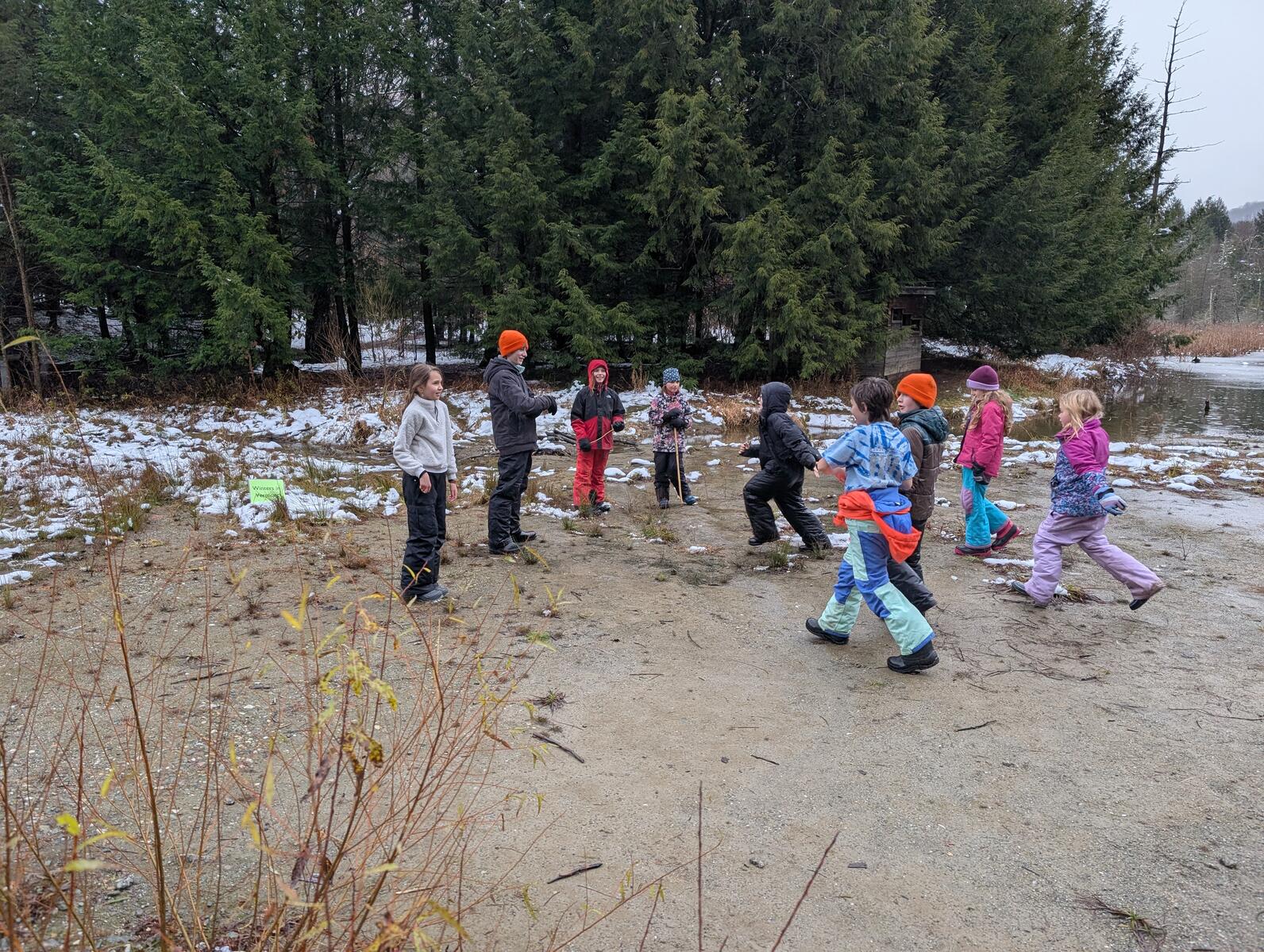
We ended our day with a game about deer and the resources they need. All animals need food, water, shelter, and space in their habitat. With the game, we explored how deer populations fluctuate. When there are plenty of resources for the deer in an ecosystem, the population increases, which then causes a decrease in resource availability for the next season. With fewer resources available, the deer population goes back down. Resource availability is also impacted within a year by the changing of seasons, when food and shelter become harder to find in the winter.

In between learning about ecosystem connections, the students enjoyed playing in the snow and throwing snowballs and each other and at trees. Next month will begin our winter session of UnSchool. We will learn more about what animals do in the winter and learn how to stay warm ourselves.
